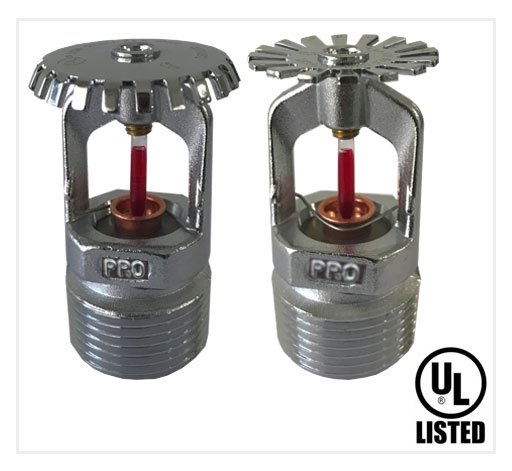-


-
K8.0 SR PENDENT UPRIGHT SPRINKLER
-
0.000.00
-
A fire sprinkler is chosen by evaluating various factors like the occupancy hazards, applications, and conditions of the building, more specifically, the area that is to be protected.
Hazard Occupancies: Sprinklers chosen largely depend on Types of Occupancies. Occupancy classifications are given in NFPA 13. Standard Sprinklers are commonly used in Light and Ordinary Hazard Occupancies. These are the occupancies where quantity and/or combustibility of contents is low and fires with relatively low to moderate rates of heat release are expected. In Ordinary Hazard Group 1, stockpiles of combustibles do not exceed 8 feet and fires with moderate heat release are expected while in Ordinary Hazard Group 2, stockpiles of combustibles do not exceed 12 feet and stock piles of contents with high heat release do not exceed 8 feet. Maximum floor area on any one floor to be protected by sprinklers supplied by one sprinkler system riser or combined riser is 52,000 Sq. feet for Light and Ordinary Hazard Areas.
Other Occupancies like Extra Hazard need special sprinklers with more water than Light and Ordinary Hazard Areas.

Table for temperature ratings, classifications and color codings.
Now, there are two types of responses, Standard Response and Quick response. Refer to the Table below to know what type of sprinkler response is required for your use.
Standard Response | Quick Response |
They have a Bulb Diameter of 5 mm | They have a Bulb Diameter of 3 mm |
They act with standard thermal sensitivity | They act slightly faster |
They act on active fire and soak or pre-wet surrounding areas for preventing spreading of fire | Apart from preventing the spreading, they spray water higher, towards the walls and ceiling so that the fire doesn’t reach high |
Usage: buildings, warehouses and commercial offices, etc. | Usage: schools, healthcare buildings, offices, light hazard areas, etc. |


